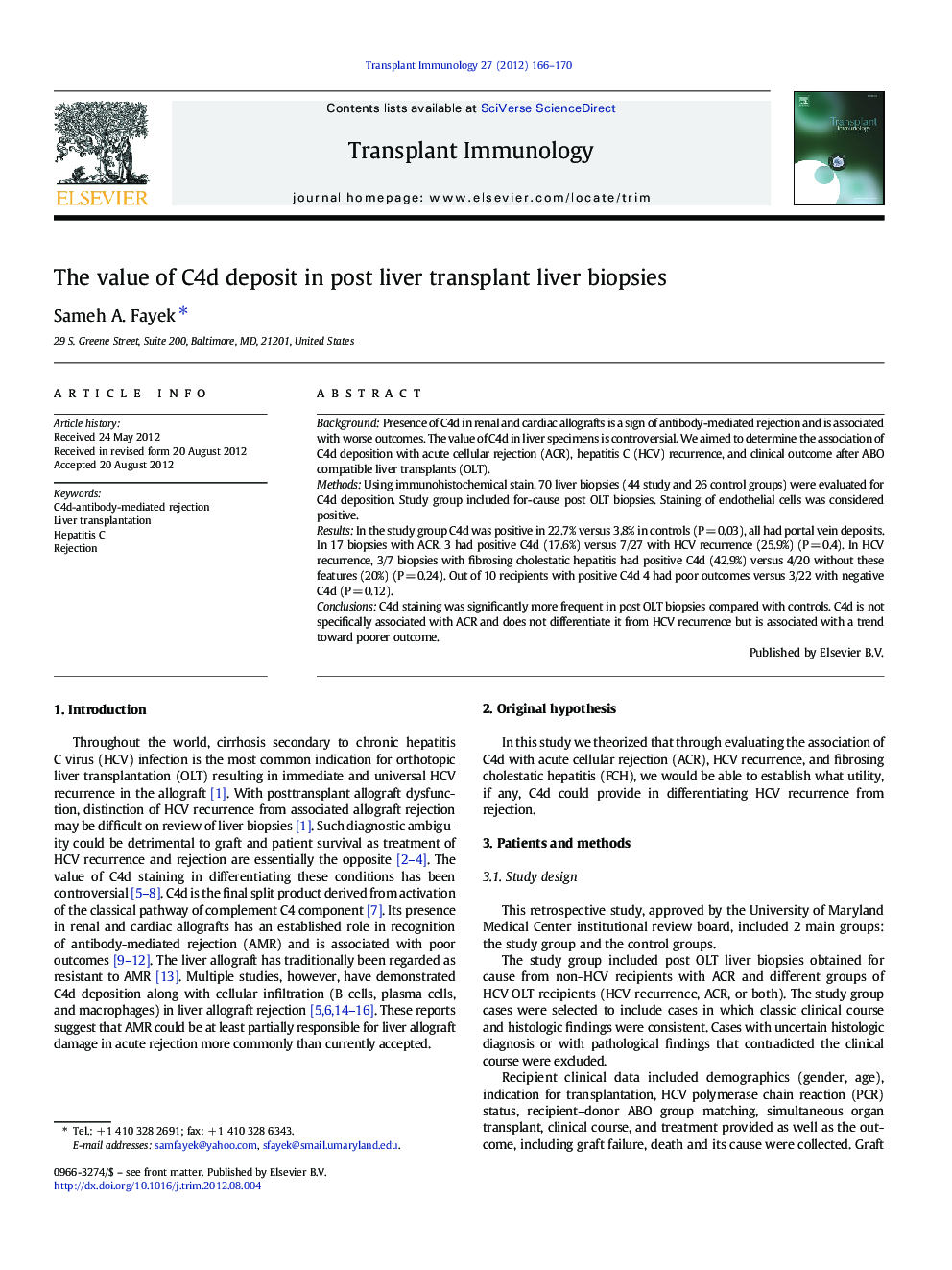| Article ID | Journal | Published Year | Pages | File Type |
|---|---|---|---|---|
| 3392095 | Transplant Immunology | 2012 | 5 Pages |
BackgroundPresence of C4d in renal and cardiac allografts is a sign of antibody-mediated rejection and is associated with worse outcomes. The value of C4d in liver specimens is controversial. We aimed to determine the association of C4d deposition with acute cellular rejection (ACR), hepatitis C (HCV) recurrence, and clinical outcome after ABO compatible liver transplants (OLT).MethodsUsing immunohistochemical stain, 70 liver biopsies (44 study and 26 control groups) were evaluated for C4d deposition. Study group included for-cause post OLT biopsies. Staining of endothelial cells was considered positive.ResultsIn the study group C4d was positive in 22.7% versus 3.8% in controls (P = 0.03), all had portal vein deposits. In 17 biopsies with ACR, 3 had positive C4d (17.6%) versus 7/27 with HCV recurrence (25.9%) (P = 0.4). In HCV recurrence, 3/7 biopsies with fibrosing cholestatic hepatitis had positive C4d (42.9%) versus 4/20 without these features (20%) (P = 0.24). Out of 10 recipients with positive C4d 4 had poor outcomes versus 3/22 with negative C4d (P = 0.12).ConclusionsC4d staining was significantly more frequent in post OLT biopsies compared with controls. C4d is not specifically associated with ACR and does not differentiate it from HCV recurrence but is associated with a trend toward poorer outcome.
► C4d deposits are more frequent in OLT biopsies compared to nontransplant biopsies. ► Acute cellular rejection is not specifically associated with C4d staining. ► C4d staining is not useful to differentiate acute rejection from HCV recurrence. ► Presence of C4d staining is associated with a trend toward poorer clinical outcome.
